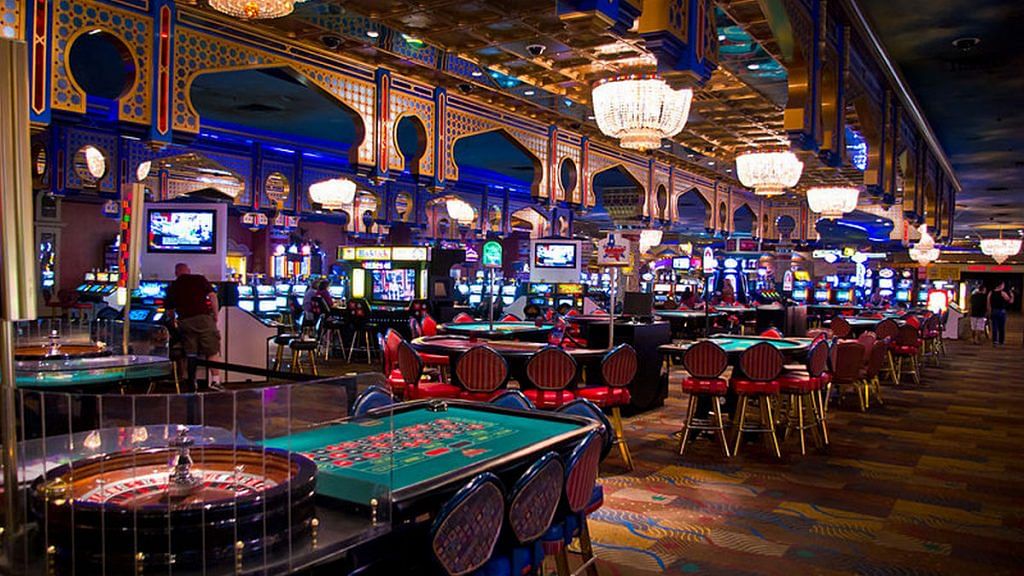
Casino games have long captivated human interest, drawing participants into a universe filled with fortune, strategy, and the allure of excitement. Each game is carefully crafted not just for enjoyment, but also to inspire particular emotional responses that keep participants immersed and invested. Understanding the reasons behind these designs reveals much about how psychology plays a crucial role in the gaming experience.
From the bright lights and dynamic sounds to the intricate layering of systems and incentives, casino games are designed to create an atmosphere of anticipation and eagerness. Game designers leverage mental cues to influence participant behavior, whether through the use of big prizes, close-call situations, or social interactivity. By examining these factors, we can better appreciate how casino games fulfill not just a need for entertainment, but more profound psychological needs for thrill and uncertainty.
Understanding Gamer Behavior
Casino games are engineered with a thorough grasp of player psychology, which is essential for attracting and holding players. The thrill of the game, coupled with the expectation of winning, establishes a powerful allure. Game designers make use of elements like audio cues, dynamic graphics, and engaging gameplay to capture attention and generate emotional responses. These sensory experiences enhance the immersive experience, making players feel more invested in the game.
Another significant aspect of player behavior is the concept of risk/reward dynamics. Casino games often manage high-risk scenarios with the potential for substantial rewards, which can cause the occurrence known as near-miss phenomenon. When players come within reach to winning, the brain produces dopamine, bolstering their behavior and motivating them to continue playing in search of that elusive win. This cycle of hope and letdown plays a critical role in how games are designed and advertised.
Lastly, social elements also play a pivotal role in player behavior at casinos. Many games are crafted to be played in groups or alongside other players, creating a sense of belonging and collective experience. The interaction inherent in games like poker enhances enjoyment and can result in prolonged gaming periods. Designers take advantage on this by designing environments that encourage players to stay, socialize, and return, making the overall casino experience more attractive.
The Role of Imagery and Sound
Visuals and audio play a significant role in enhancing the gambler’s experience within gambling games. Designers utilize bright colors, striking graphics, and engaging animations to grab gambler’s attention and hold their interest. The use of themes, such as adventure or opulence, helps create an enthralling atmosphere that takes players into another world. By appealing to the senses, these elements contribute to a heightened emotional response, encouraging players to engage more profoundly with the games.
Sound design is equally important in reinforcing the experience of gambling games. The combination of ambient music, audio effects for winning combinations, and environmental noises creates an sound landscape that holds players enthralled. Sounds associated with victories, such as ringing bells or festive music, evoke feelings of excitement and satisfaction, prompting players to continue playing. These sound cues are carefully placed to amplify the excitement of the game and create a more immersive experience.
Moreover, the synchronization of visuals and audio is important for supporting the game’s overall concept and atmosphere. Each element should coordinate seamlessly to create a unified experience that draws players in. The effective use of this synergy not only enhances user enjoyment but also increases the chances of return play, as players become more engaged in the immersive world that the casino games offer. This thoughtful combination of visuals and sound ultimately enhances player involvement and loyalty.
Incentive Systems and Engagement
The design of gambling experiences greatly relies on reward systems to ensure players engaged and coming back for additional experiences. These systems are based in behavioral principles that take advantage of human nature and desire. Participants are often motivated by the thrill of success, which is reinforced by immediate feedback through the game structure’s design. This prompt satisfaction not only enhances the overall experience but also cultivates a feeling of achievement, encouraging players to keep participating in hopes of greater rewards.
Gaming establishments implement various incentive systems, such as large payouts, bonuses, and increased rewards, to engage participants. These elements create a layer of excitement that maintains engagement. FB88 Additionally, the unpredictability of outcomes plays a crucial role in keeping interest. The variable reward system, where successes are random but happen often enough, maintains participants on edge and driven to continue participating. This loop of hope and anticipation is essential to the effectiveness of casino games.
Furthermore, community aspects, such as tournaments and collaborative options, enhance the engagement factor by leveraging the competitive nature of players. The communal aspect of playing with others can amplify the excitement of winning and create a community atmosphere within the casino. Tải app FB88 By combining these social dynamics with efficient incentive structures, casino games don’t just offer entertainment but also foster a stronger bond among participants, solidifying their commitment to the gaming experience.

